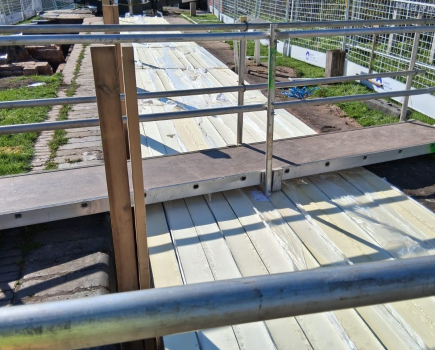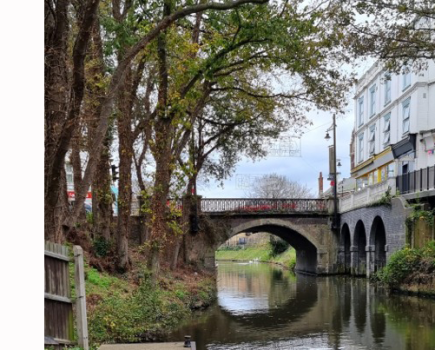Making galvanic corrosion and galvanic isolation simple

All metals have a “natural” electrical charge . Different metals have different electrical charges. The bronze propeller has a different electrical charge (voltage) to the stainless steel propeller shaft. The rudder has a different natural voltage to the metal hull. If we were to place the bronze prop and the stainless shaft into the water without connecting them physically together there is no problem. Both the metals remain in there original state. If however the propeller is physically connected to the shaft and we place them in water things begin to happen!
The metal with the highest natural voltage will try to discharge its voltage to the other metal. When electrical current flows between the two metals (via the water) corrosion will take place. The metal with the lowest natural voltage will be fine but the metal with the higher natural voltage will corrode – bad news.
We overcome this problem by attaching an additional metal to the propeller shaft. This chosen metal has an even higher natural voltage than the bronze prop or the steel shaft. This metal is known as the ‘anode’. We now have three metals connected together in the water. Current will always flow from the highest voltage to the lower voltages and the anode (highest voltage) will corrode and reduce in size, over time disappearing completely. The good news is the other two metals remain intact. By “adding” the anode we have protected the valuable shaft and propeller. When the anode finally corrodes away the next “highest” voltage metal (the bronze prop) will begin to corrode. It is essential that anodes are inspected regularly to ensure they are capable of protecting all the other underwater metal fittings. When the anodes have gone so has your protection!

So far so good! Providing our anodes are good, well connected and of the correct size and type we can minimize corrosion of our underwater connected metals. End of story? Unfortunately not quite.
Let’s look at what happens in the marina. We moor our boats alongside other boats, metal pontoons and metal stantions.
Boats have lots of metals all in the water. Metal hulls, metal propellers, drive shafts, outdrives, skin fittings, trimtabs, rudders etc. We have protected the metals on our boat by fitting sacrificial anodes which in turn are connected to all our underwater fittings. We are not physically connected to our neighbours boat we are separated by the water. Our neighbours boat cannot affect us- or can they?

How other boats can affect you?
It’s cold outside. The batteries are going flat. We need a brew. We need electricity. Here comes the mains.
When you plug into mains shore power the cable you use has 3 internal cables: A live, a neutral & an earth wire. The earth wire goes to the shore power pedestal where it is physically connected to the ground. This is a safety wire and protects you in the case of an electrical problem. Your neighbouring boats also use the same earth connection. This effectively connects all the boats together via the earth cables in the shore power leads. In your boat the shore power earth lead goes to your electrical consumer unit & then to all metal components such as the engine block, fuel tanks, shafts/ propellers etc & then finally connects to your anodes. Unfortunately as all the boats (and metal pontoons) are now interconnected via the earth cables any voltage leaks or “galvanically” generated voltages have an easy path between the boats. This often results in rapid loss of sacrificial anodes & increased corrosion of all underwater metals. If the boat next to you does not have anodes he won’t worry: He is using yours!

Avoiding the problem
So how can we stop this new corrosion path? We need to stop current flowing down the earth wire but we cannot remove the earth cable…It’s a safety cable and there to protect us. In the case of a serious electrical problem on board the earth cable ensures our mains trips and fuses work correctly and protect us from electrical shock.

To control this problem we install a galvanic isolator in the earth wire as it comes to the boat. The isolator is an electronic device which “blocks” any low level damaging voltages from entering your vessel & protects your anodes and underwater metals. It maintains separation from other vessels reducing any corrosion paths between boats. In the rare case of an electrical short circuit on board your vessel the isolator ensures the safety earth connection .The isolator is designed to operate in conjunction with fuses, circuit breakers and RCD safety devices. It is a solid state device & resets itself once the electrical fault has been rectified.
A galvanic isolator does not replace your sacrificial anodes which are essential to protect your underwater metals.
A galvanic isolator does offer protection from both stray currents & galvanic currents which attack your boat via the shore power earth cable. These currents can transmit from other boats, metal pontoons & leaks on the 240 volt systems in the marina. Serious leaks can devastate your props / shafts/ anodes etc in a matter of weeks. Surveyors & boat inspectors will usually recommend fitting a galvanic isolator in the marina environment (They see the effects of unprotected boats all too often).
If you have any questions or would like an information pack you can speak to us on 01977 513607 or email safeshore.marine@virgin.net. We are always pleased to help and advise if in doubt.







